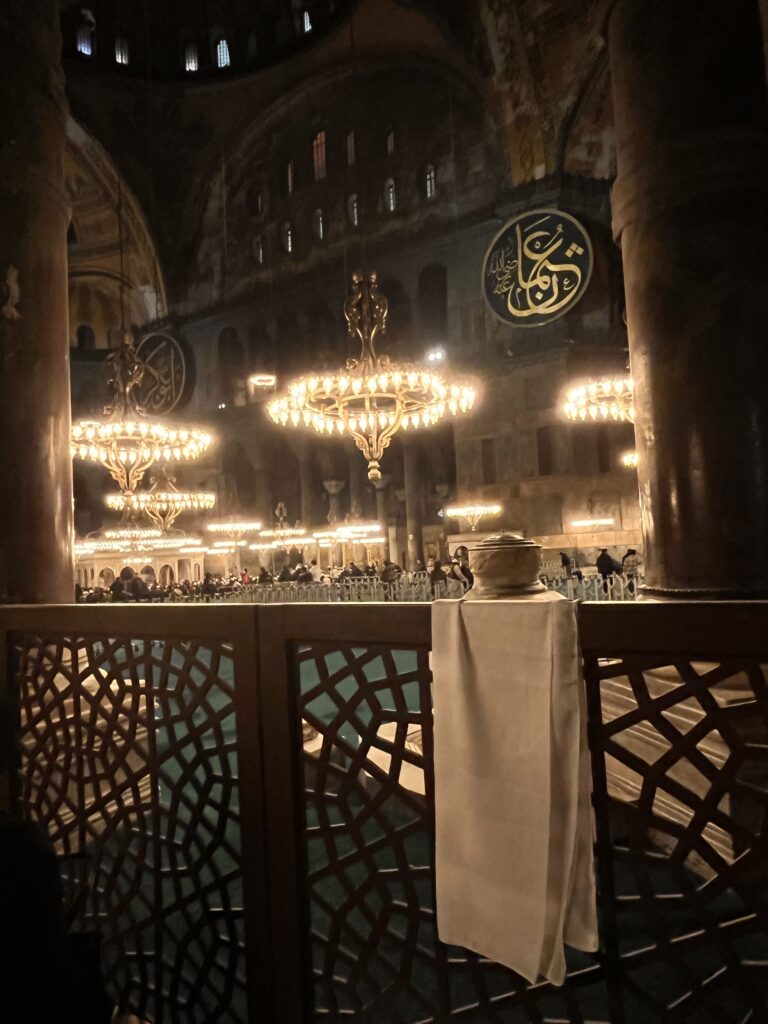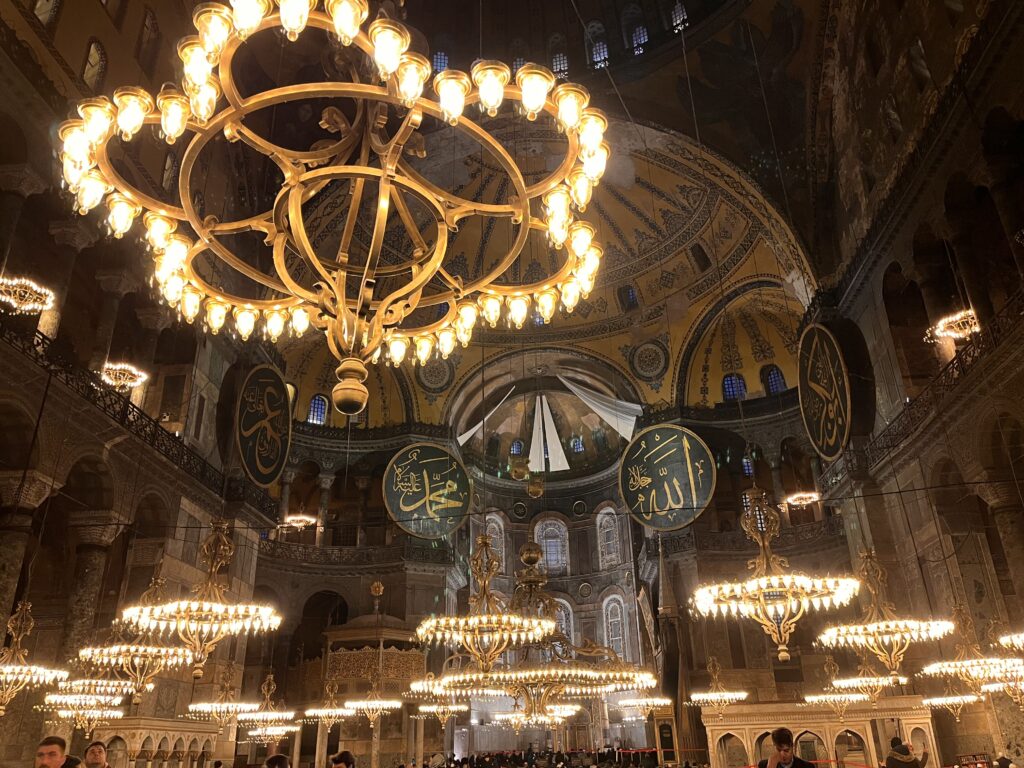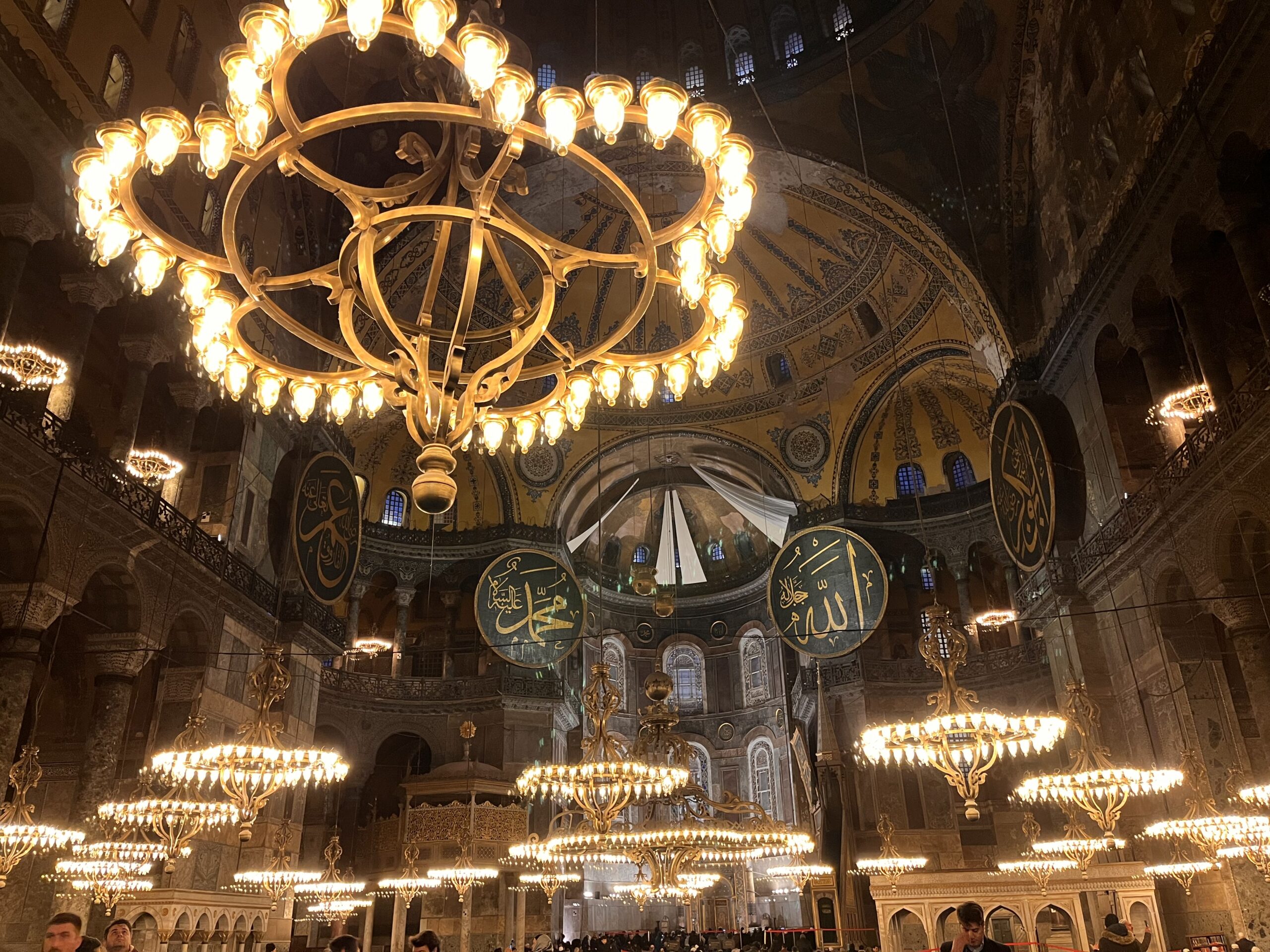Hagia Sophia was given the original name Megale Ekklesia when it was first constructed. Throughout history, Istanbul has recognized this location as one of its most significant values. Megale Ekklesia, translating to the great church but it was constructed three times due to multiple demolitions over time.
Its name was changed to Sophia in the fifth century. This name was chosen because it was dedicated to Theia Sophia in the Christian trinity. After the conquest of Constantinople by the Ottoman emperor Mehmet the Conqueror, it was renamed Hagia Sophia, a name it is still known today.
Its construction was initiated under the reign of Constantine I and brought to completion during the reign of Constantine II.
Its inauguration by Constantine II took place on February 15, 360. This era, known as the First period, was terminated during a revolt in the 400s, resulting in its destruction.
The start of its reconstruction in the 400s was initiated by King Theodosius II. This marked the beginning of the second period. ALThe lamb reliefs representing the 12 Apostles were created during this time.
The termination of the second period occurred in the 530s due to the Nika Uprising, the largest uprising in the city’s history.
The Nika uprising, the city’s largest uprising, destroyed half the city and tens of thousands of deaths.
The commencement of the third Hagia Sophia period was under the reign of King Justinian I, who quashed the Nika uprising. A goal was set by King Justinian I to create the grandest Hagia Sophia ever built.
Architecture and History
The materials for the construction were not newly produced. Rather, they were sourced from existing structures in the city and used to complete the building. This is why it is acknowledged as the world’s fastest-built cathedral, a title it still holds.
The oldest cathedral in the world, Hagia Sophia, was completed and subsequently opened for worship within 5 years.
As well as serving as the religious hub for the Orthodox, Hagia Sophia served as the location for the coronation ceremonies of Eastern Roman kings.
It underwent another round of destruction during the 4th Crusade when it was invaded and pillaged by Latin Catholics under the leadership of the Venetian Republic.
After Istanbul was seized by Ottoman Emperor Fatih Sultan Mehmet in 1453, it was adopted as the symbol of the conquest. During this period, it experienced its first conversion from a church to a mosque.
A restoration of Hagia Sophia was ordered by Atatürk, the founder of the Republic of Turkey, in the 1930s.
Later, a law was enacted to declare it a museum. In 1991, a portion of the museum was reopened for worship as a mosque. In July 2020, it was granted full mosque status.
Hagia Sophia, which is in use as a mosque today, is also open for tourist visits.
Entrance Fees and Working Hours
Since Hagia Sophia has the status of a mosque today, it is open 24/7. However, if you are going to visit as a tourist, you need to consider the working hours.
Since entrances to some sections are subject to a fee, you will have to pay an entrance fee.
If you have a museum card, the entrance fee is 250 Turkish Lira. The full ticket price is 25 Euros.
By paying 25 Euros you can visit all areas of Hagia Sophia.
How to get to Hagia Sophia?
You can reach Hagia Sophia mosque by metro, marmaray, ferry, tram and bus alternatives.
In all means of transportation other than buses, you can get here by transferring with the Kabataş – Bağcılar tram and getting off at Sultanahmet stop.

What is there in Hagia Sophia?
Remember that since Hagia Sophia is now a mosque, you must follow the rules of the place of worship when visiting inside.



The list of things you need to see is as follows:
The doors
External narthexes
Interior narthexes
Emperor Gate
Orea Porta
Parade of warriors
Ompallion
Columns
Baptismal font
Marble door
Tomb of Henricus Dandolo
Presentation mosaic
Theotokos mosaic
Deisis mosaic
Cubes
Kommenos mosaic
Zoi mosaic
Angels in the pendants
Weeping Pillar (Wishing Pillar)
Emperor gate mosaic
Viking script
Calligraphy
Hızır Makam
Patriarch mosaic in the tympanum
Mahmud I Library
Alexandros mosaic

[…] You can click here to read our detail guide to Hagia Sophia. […]